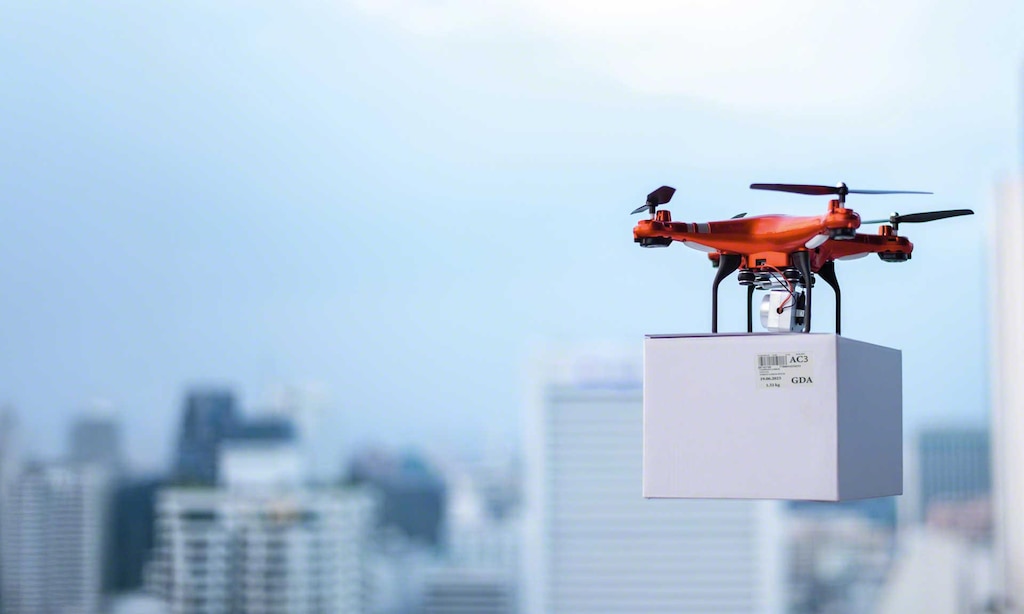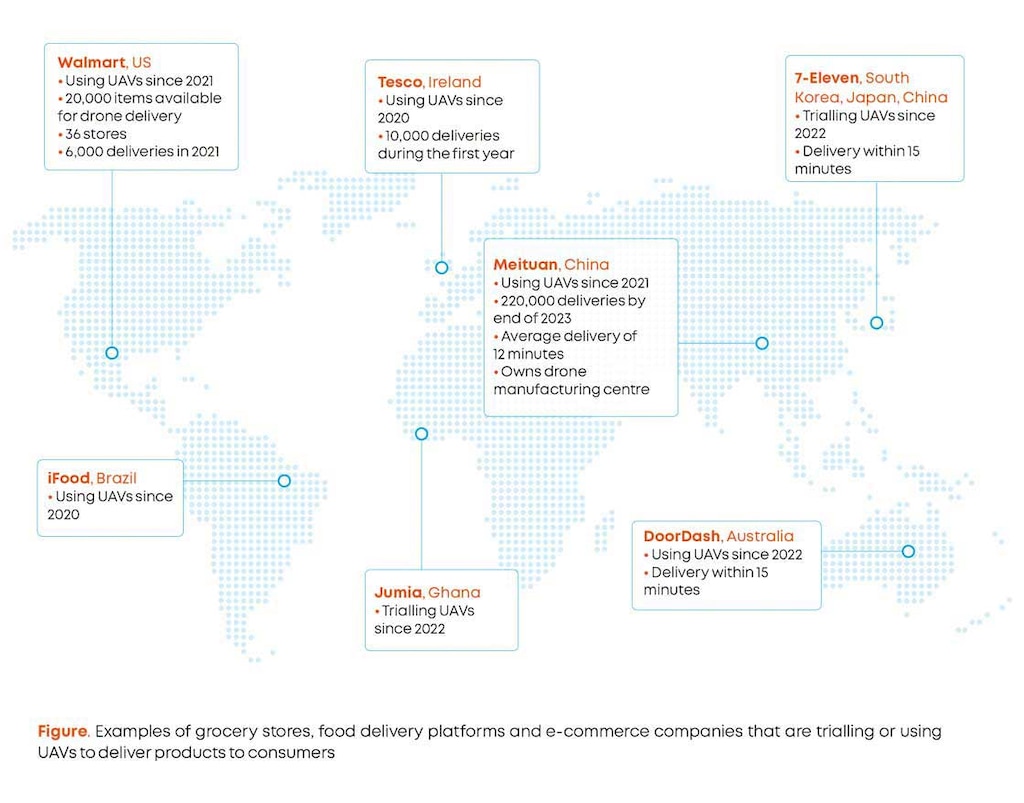
According to a report from consultancy PwC, drones are a transformative technology set to revolutionise last-mile delivery in the coming years. Its projections suggest that by 2034, advanced air mobility could serve about 67% of the population and replace 389 billion traditional deliveries, significantly impacting suburban and rural areas.
PwC estimates that drone delivery costs, currently ranging from $6 to $25, will fall by more than 70% over the next decade. This could enable widespread adoption by matching conventional last-mile costs, marking a turning point. Unmanned aerial vehicles (UAVs) could provide an alternative for companies looking to enter new markets, increase customer satisfaction and drive profitability in hard-to-reach locations. Numerous businesses are already investing in this technology backed by years of development.

PwC expects the 14,000 daily deliveries made in 2024 to rise to 808 million annual deliveries in 2034 at $2 each. This growth would result in a market valued at $65 billion in just a decade.
Drone-deliverable products
This technology is capable of transporting most items, provided they meet the system’s volume and weight limitations. The following goods are the most suitable for B2C drone delivery:
- Food. Ready-to-eat meals and orders prepared by restaurants and dark kitchens.
- Goods. Products from supermarkets and shopping centres.
- Parcels and e-commerce. Same-day delivery from postal services and logistics facilities.
- Prescriptions. Medications from chemists’ and pharmaceutical distribution centres.
In the short term, this technology has certain constraints in cities — e.g. security risks and a lack of adequate landing space — slowing down its uptake. Conversely, ideal regions for drone deliveries are suburban, rural and remote areas. They often have limited logistics options due to high costs and operational challenges, making them prime candidates for this solution to improve accessibility.
